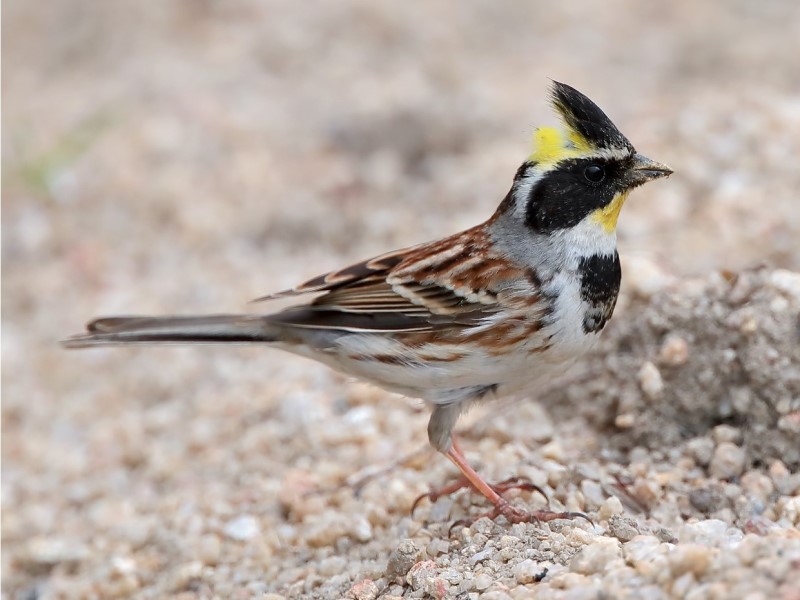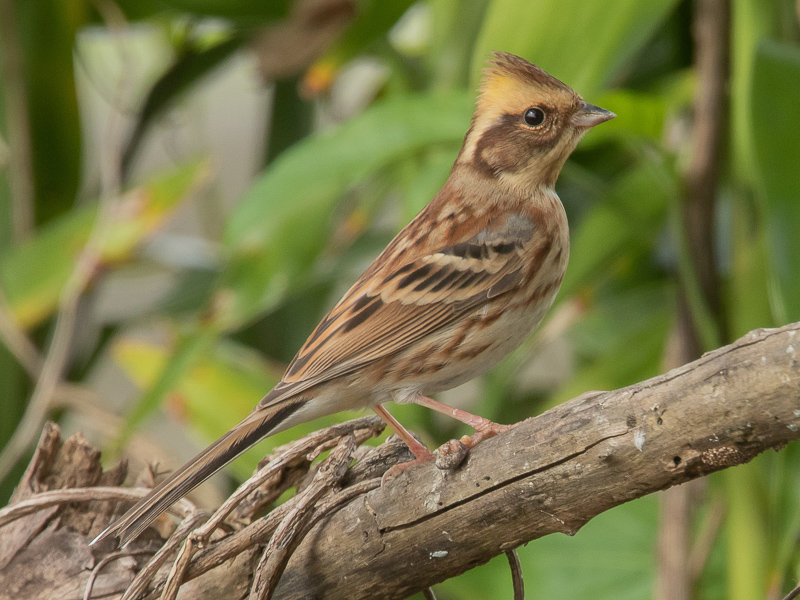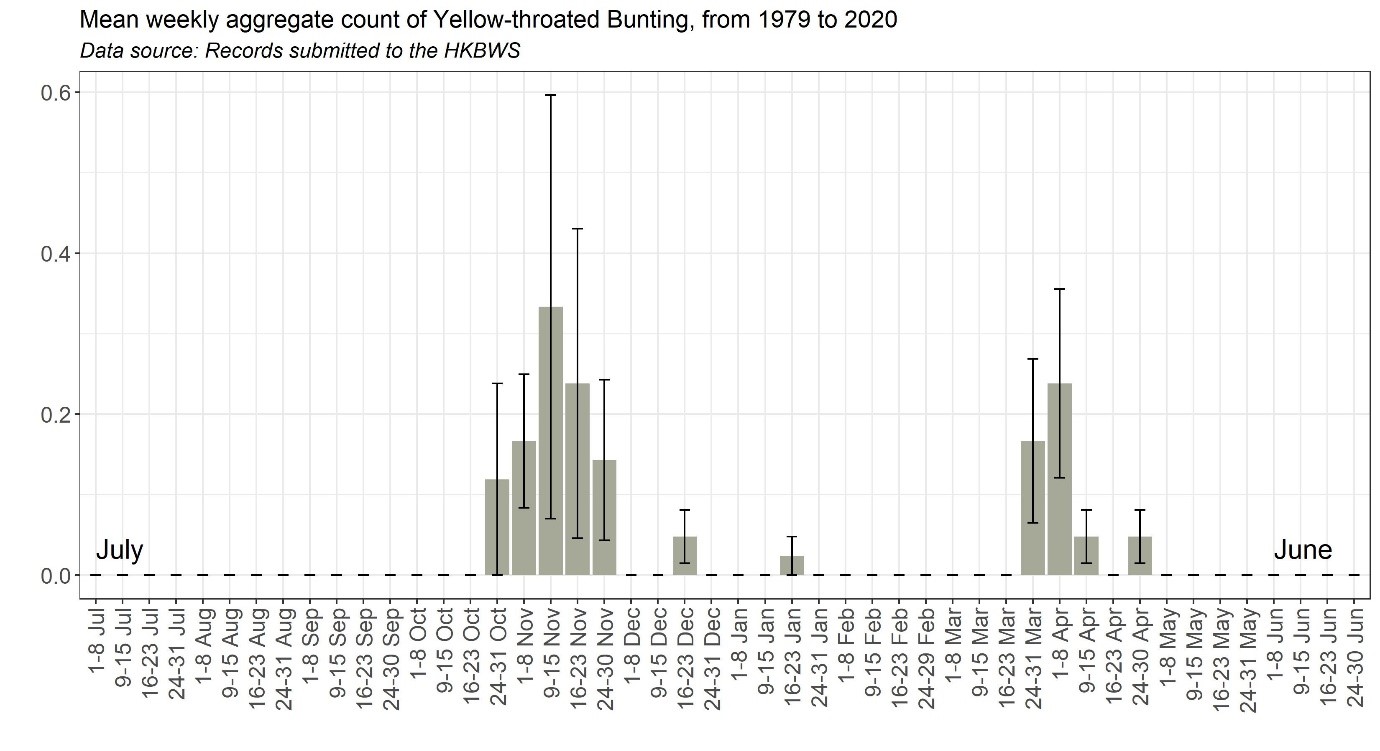Yellow-throated Bunting Emberiza elegans 黃喉鵐
Category I. Rare passage migrant, more numerous in autumn. Records from Po Toi and widespread areas at edge of shrubland and forest.
IDENTIFICATION

Apr. 2021, Michelle and Peter Wong. Male.
Both sexes usually have a raised crest, whitish tips to the median coverts and pale brown tips to the greater coverts. Adult male has distinctive black forecrown, broad black mask from bill to neck sides, isolated hemispherical black bib on chest contrasting with whitish underparts and yellow rear crown and throat. Black areas are obscured by pale tips in autumn and early winter, particularly the chest (still visible on this bird).

Nov. 2016, KWOK Tsz Ki. Female.
Female has brown forecrown streaked darker, plain dark brown ear coverts with poorly-marked small whitish spot at rear, dull yellowish rear crown and creamy submoustachial and throat finely streaked brown; mantle greyish and warm brown, flank streaks warm brown.
VOCALISATIONS
The typical bunting ‘tik’ call is rather hard and clean.
DISTRIBUTION & HABITAT PREFERENCE
Over 70% of records have occurred on the migrant hotspot of Po Toi, coverage of which has dramatically changed our understanding of this species status in HK. Other records have occurred at widespread sites, either in open country or close to woodland or shrubland.
OCCURRENCE
Yellow-throated Bunting is largely a passage migrant through HK (Figure 1). In autumn it has occurred from 31 October to 29 November, peaking around the middle of the month, with the highest count being eight on Po Toi on 16 November 2009. In spring it has occurred from 24 March to 25 April with the highest count being four on Po Toi from 31 March to 7 April 2010.
In contrast, the first two records of Yellow-throated Bunting occurred midwinter, on 16 December 1979 and 17 January 1987. The next two winter records in December 1995 and January 1996 were considered to relate to ex-captive individuals based on plumage condition, as were four other records in the period 1990-1996. A further winter record considered to refer a naturally-occurring individual was recorded on 16 December 2006.
BEHAVIOUR, FORAGING & DIET
Somewhat more approachable than many other buntings in HK, foraging birds on Po Toi can often be seen at close range foraging on seeds.
RANGE & SYSTEMATICS
Breeds in northeast China and adjacent parts of Russia, and on the Korean Peninsula; winters from the Korean Peninsula through east China (at least as far north as Beijing) south to southeast coastal provinces, including Hainan and Taiwan (Copete 2020, Liu and Chen 2021, Birding Beijing 2022).
The nominate subspecies breeds in northeast Asia, while E. e. elegantula , which is darker overall and more richly coloured (Copete 2020), breeds in central China and is generally considered resident. It is presumed birds occurring in HK are the nominate form.
CONSERVATION STATUS
IUCN: Least Concern. Population trend stable.
Figure 1.

Birding Beijing (2022). https://birdingbeijing.com/the-status-of-the-birds-of-beijing/ (Accessed 30 June 2022).
Copete, J. L. (2020). Yellow-throated Bunting (Emberiza elegans), version 1.0. In Birds of the World (J. del Hoyo, A. Elliott, J. Sargatal, D. A. Christie, and E. de Juana, Editors). Cornell Lab of Ornithology, Ithaca, NY, USA. https://doi.org/10.2173/bow.yetbun1.01
Liu, Y. and S. H. Chen (eds) (2021). The CNG Field Guide to the Birds of China (in Chinese). Hunan Science and Technology Publication House, Changsha.

